
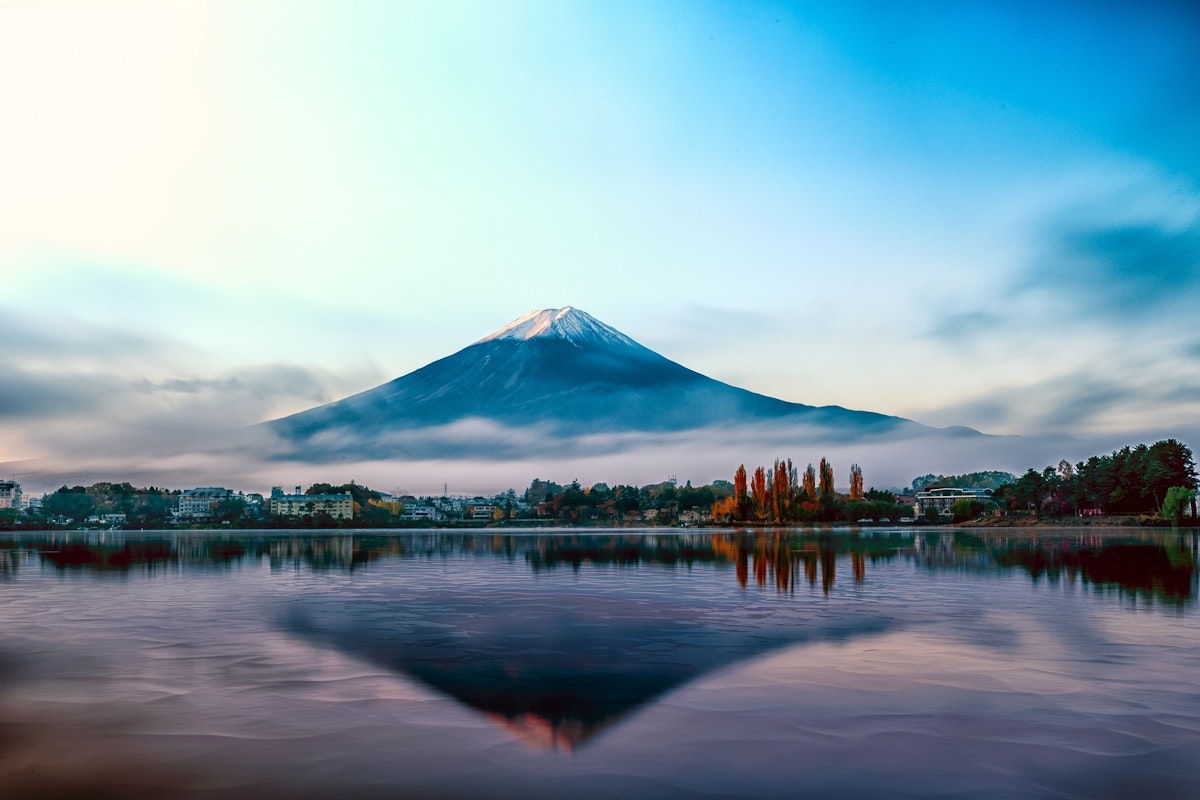
Everyone knows Mount Fuji, the UNESCO World Heritage Site that has captivated visitors for centuries. But fewer people are aware of the hidden gems surrounding this iconic mountain.
This article uncovers the off-the-beaten-path routes and attractions in the Mount Fuji area, ideal for those seeking a unique experience.
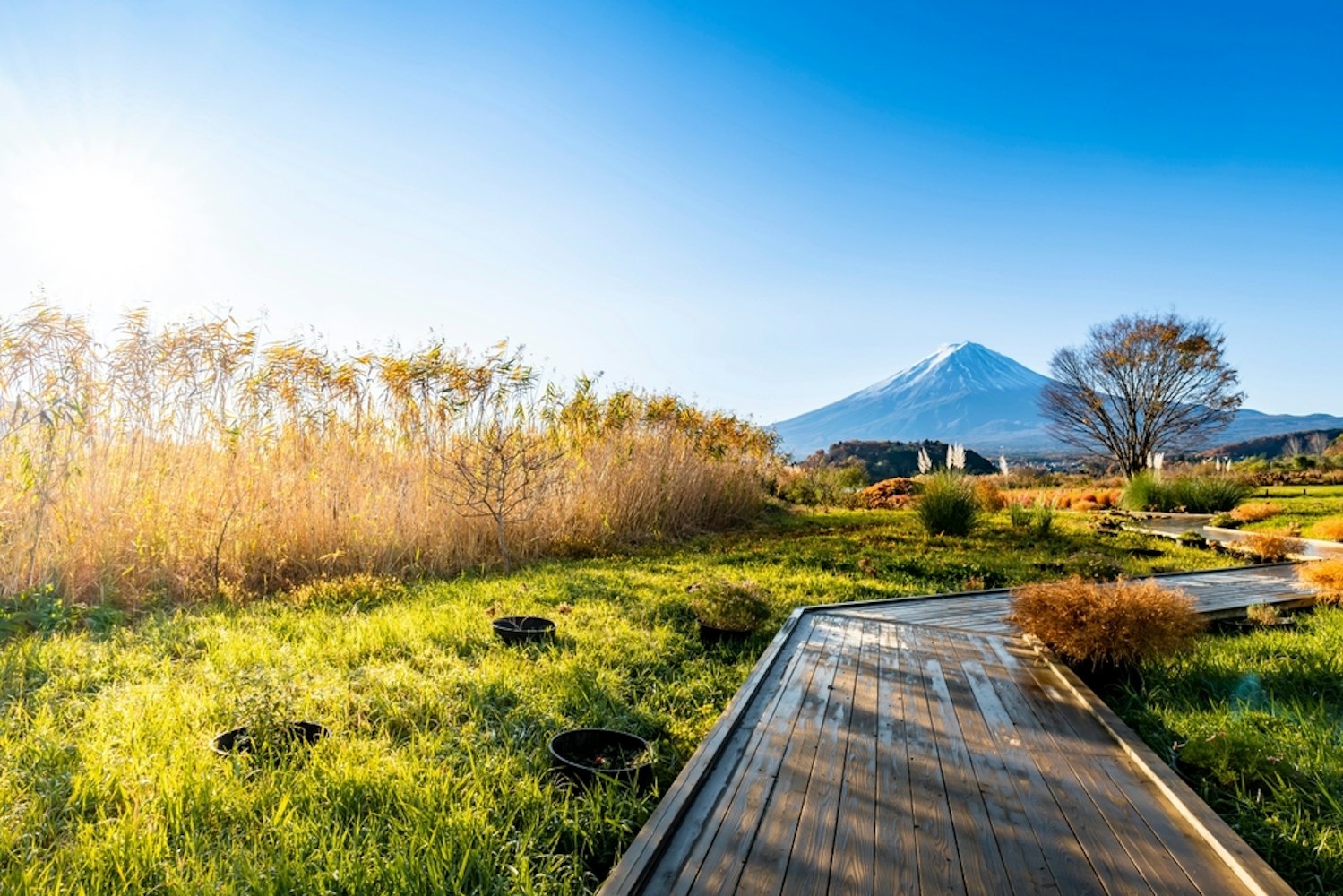
Oishi Park is a popular destination near Lake Kawaguchi in the Fuji Five Lakes region. It's best known for offering a stunning panoramic view of Mt. Fuji, especially during the cherry blossom season.
The park is filled with flowers and walking paths, making it a serene spot for photography and strolls. Whether you're looking to capture the iconic mountain or enjoy the outdoors, Oishi Park is a must-visit in the Mount Fuji area.
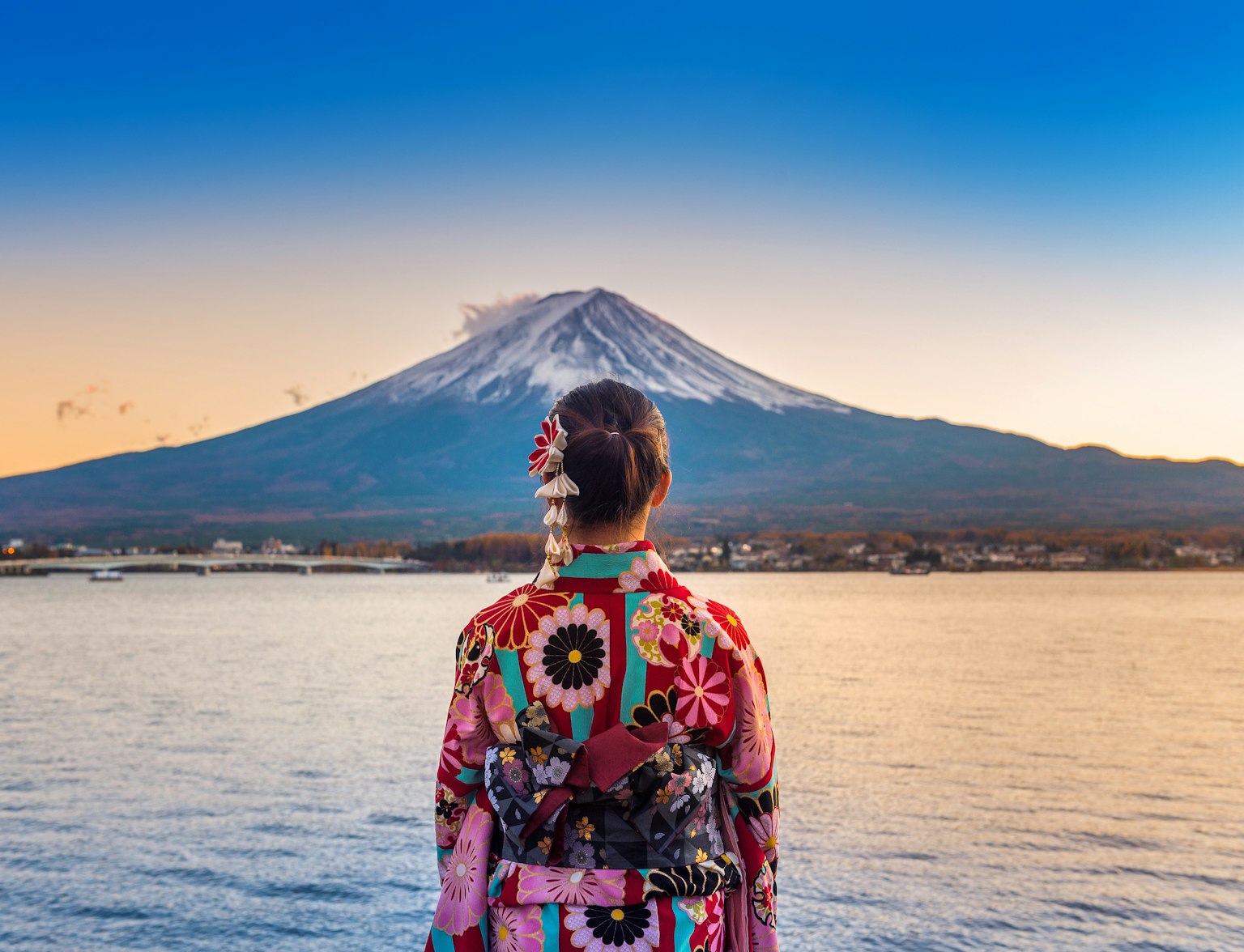
Witness the colorful flower beauty of Oishi Park.
Generally open year-round
Park grounds are usually accessible from dawn to dusk
Shops and cafes within the park may have varying operating hours, typically between 9:00 AM to 5:00 PM
Admission to the park itself is usually free.
Parking may have a nominal fee, particularly during peak tourist seasons.
Charges may apply for specific activities or attractions within the park, such as guided tours.
Note: Opening hours and fees are subject to change, so checking the latest information before your visit is a good idea.
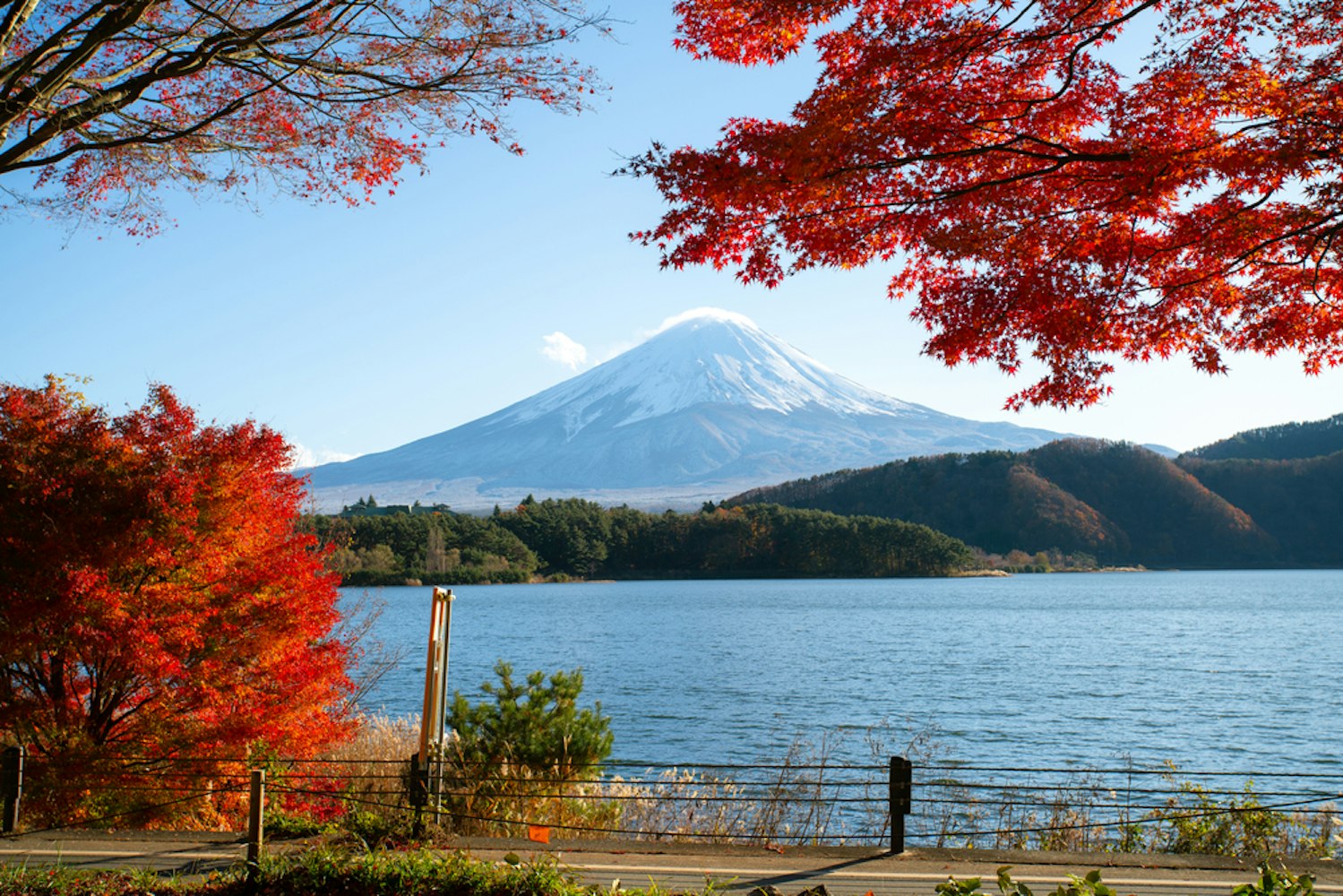
The Fuji Five Lakes are a group of lakes at the base of Mount Fuji, Japan's iconic mountain and UNESCO World Heritage Site. While Lake Kawaguchi is perhaps the most famous of the quintet, each lake has its distinct allure and offers various activities and scenic spots for visitors.
This article dives deep into these lakes to help you explore beyond the typical tourist trails in the Mount Fuji area.
Lake Kawaguchi is the most popular and accessible of the Fuji Five Lakes near Mount Fuji in Japan. It offers various activities, such as cable car rides, hot springs, and boating.
The lake is especially famous for its stunning views of Mt. Fuji, with scenic spots like Oishi Park providing excellent photo opportunities. Whether you're an adventure seeker or want to soak in the views, Lake Kawaguchi has something for everyone.
Opening Hours: Public area, open 24/7
Fees: Free to access; activities may have separate fees
Lake Shoji is one of the lesser-known lakes in the Fuji Five Lakes region, making it a peaceful escape for those looking to avoid crowds. Situated at the base of Mt. Fuji, this lake offers stunning, unobstructed views of the iconic mountain.
Its tranquil setting makes it an ideal spot for activities like fishing, photography, or simply enjoying nature. With fewer tourists, Lake Shoji allows you to experience the beauty of Mt. Fuji in a more serene and intimate setting.
Opening Hours: Public area, open 24/7
Fees: Free to access, boat rentals, and fishing permits extra
Lake Saiko is one of the lesser-known lakes in the Fuji Five Lakes region, offering a tranquil escape from the crowds. Surrounded by lush forests and walking trails, it's a haven for nature enthusiasts.
The lake is near the mysterious Aokigahara Forest and provides various outdoor activities like camping and fishing. Less commercialized than Lake Kawaguchi, Lake Saiko offers a peaceful setting to enjoy a unique view of Mt. Fuji.
Opening Hours: Public area, open 24/7
Fees: Free; activities like camping may have fees
Lake Yamanaka is the largest of the Fuji Five Lakes and is especially popular among locals. It is situated near Mt. Fuji and offers a diverse range of activities, including boating, fishing, and cycling.
The lake is also a prime spot for viewing Mt. Fuji, particularly in spring when the cherry blossom trees bloom. Its size and various activities make it a must-visit for anyone looking to experience the Mount Fuji area beyond the more touristy Lake Kawaguchi.
Opening Hours: Public area, open 24/7
Fees: Free to access, fees for boating and fishing
Lake Ashi is located in Hakone, near the Mount Fuji area. Although it's not technically one of the Fuji Five Lakes, it's often mentioned in the same breath due to its stunning views of Mt. Fuji.
The lake is known for its scenic boat rides and proximity to hot springs. Visitors can also explore the nearby Hakone Shrine. Lake Ashi offers a blend of natural beauty and cultural richness, making it a popular destination for those visiting the Mt. Fuji region.
Opening Hours: Public area, open 24/7
Fees: Free; boat tours and hot springs have separate fees
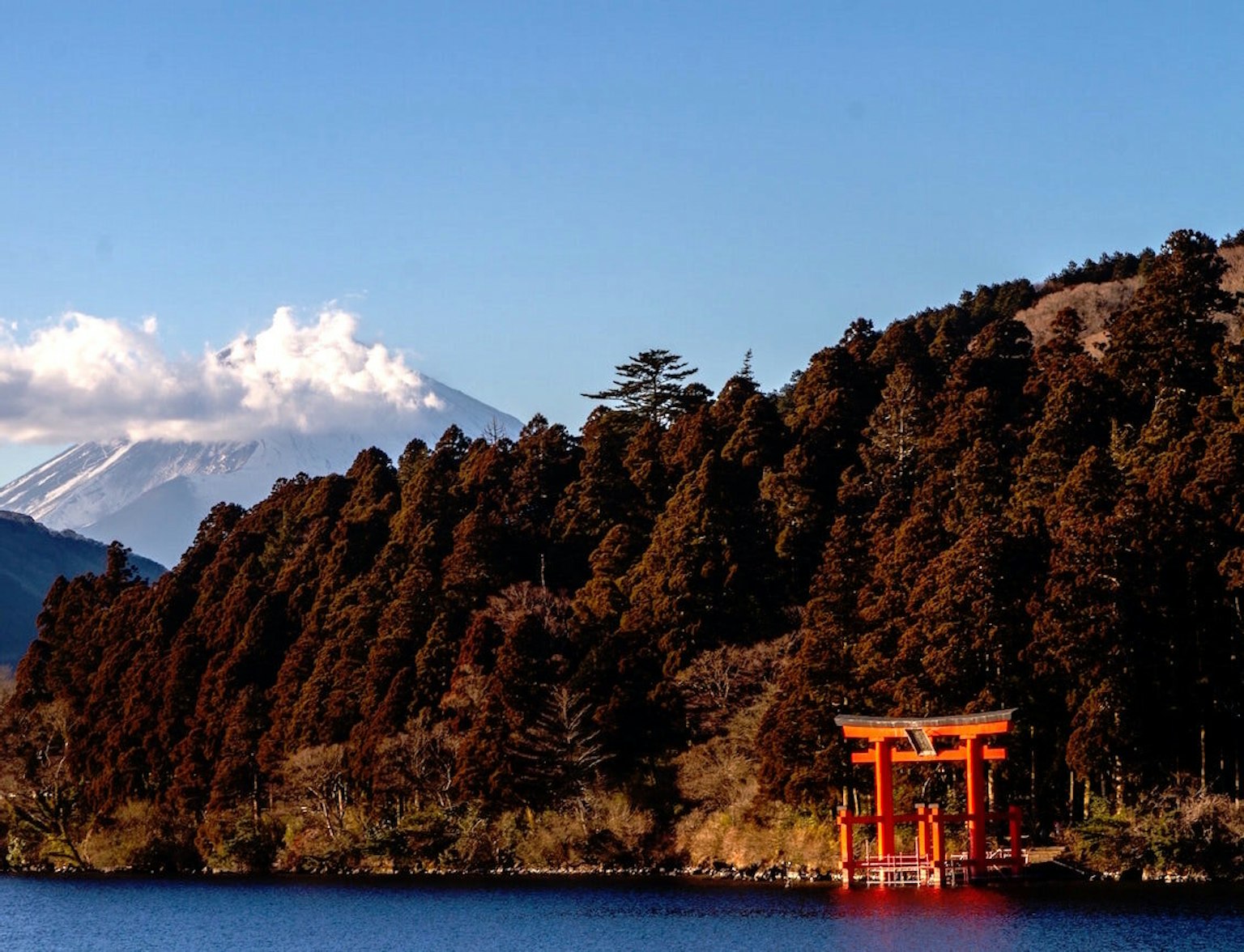
Take a boat ride on Lake Ashi with this tour.
Opening Hours: Generally, 9:00 AM - 5:00 PM (varies by season)
Fees: Around ¥800-¥1,200 for adults, ¥400-¥600 for children
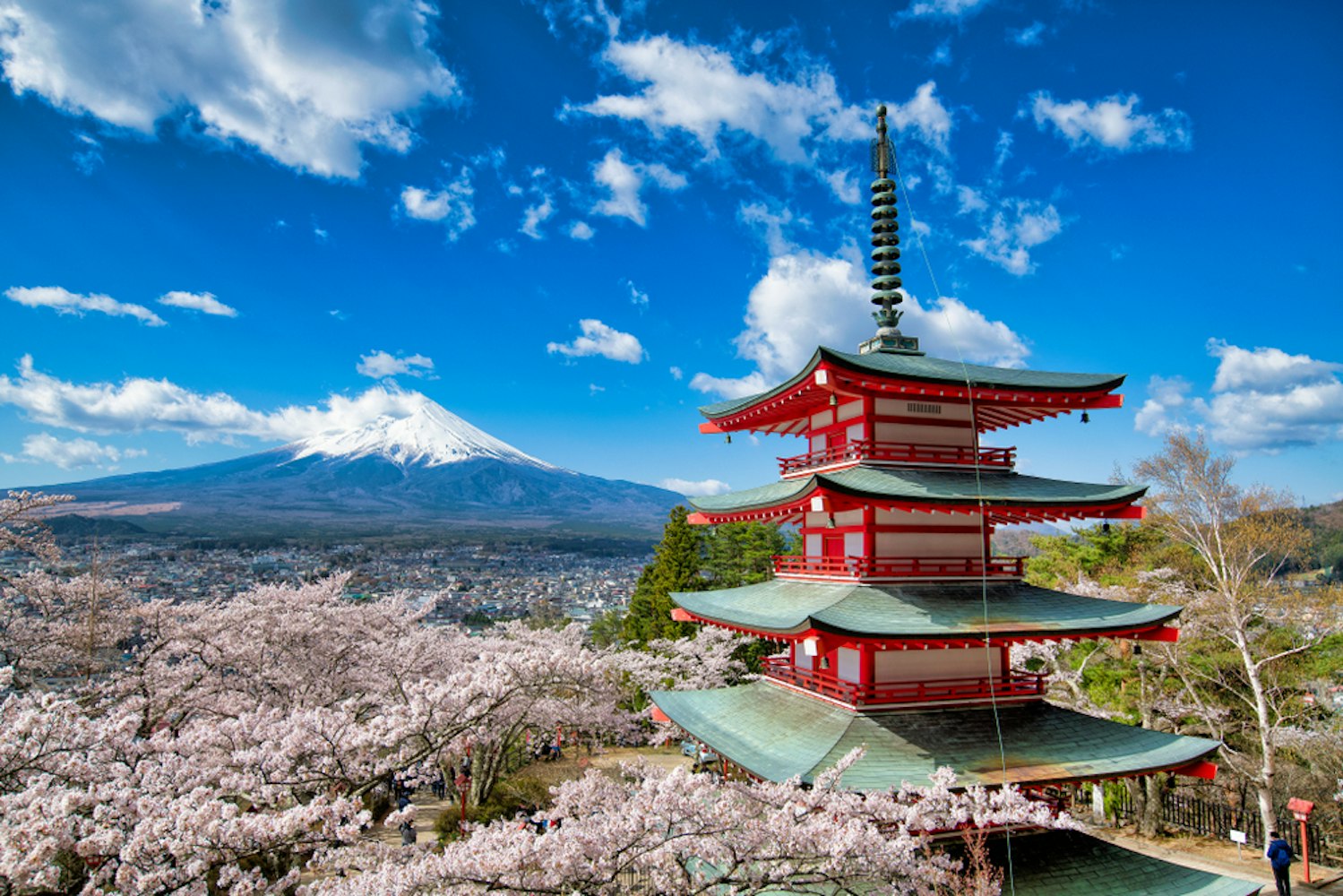
Arakura Sengen Shrine and Chureito Pagoda are popular destinations near Mt. Fuji, offering some of the most iconic panoramic views of the mountain. The shrine is a spiritual site with a long history, while the five-story Chureito Pagoda adds a touch of traditional Japanese architecture to the natural landscape.
A relatively short climb up a series of steps from the shrine takes you to the pagoda, which is particularly popular during cherry blossom season and for capturing the phenomenon known as Diamond Fuji, where the sun appears to sit right atop Mt. Fuji. Both spots are must-visit locations for photographers and nature enthusiasts alike.
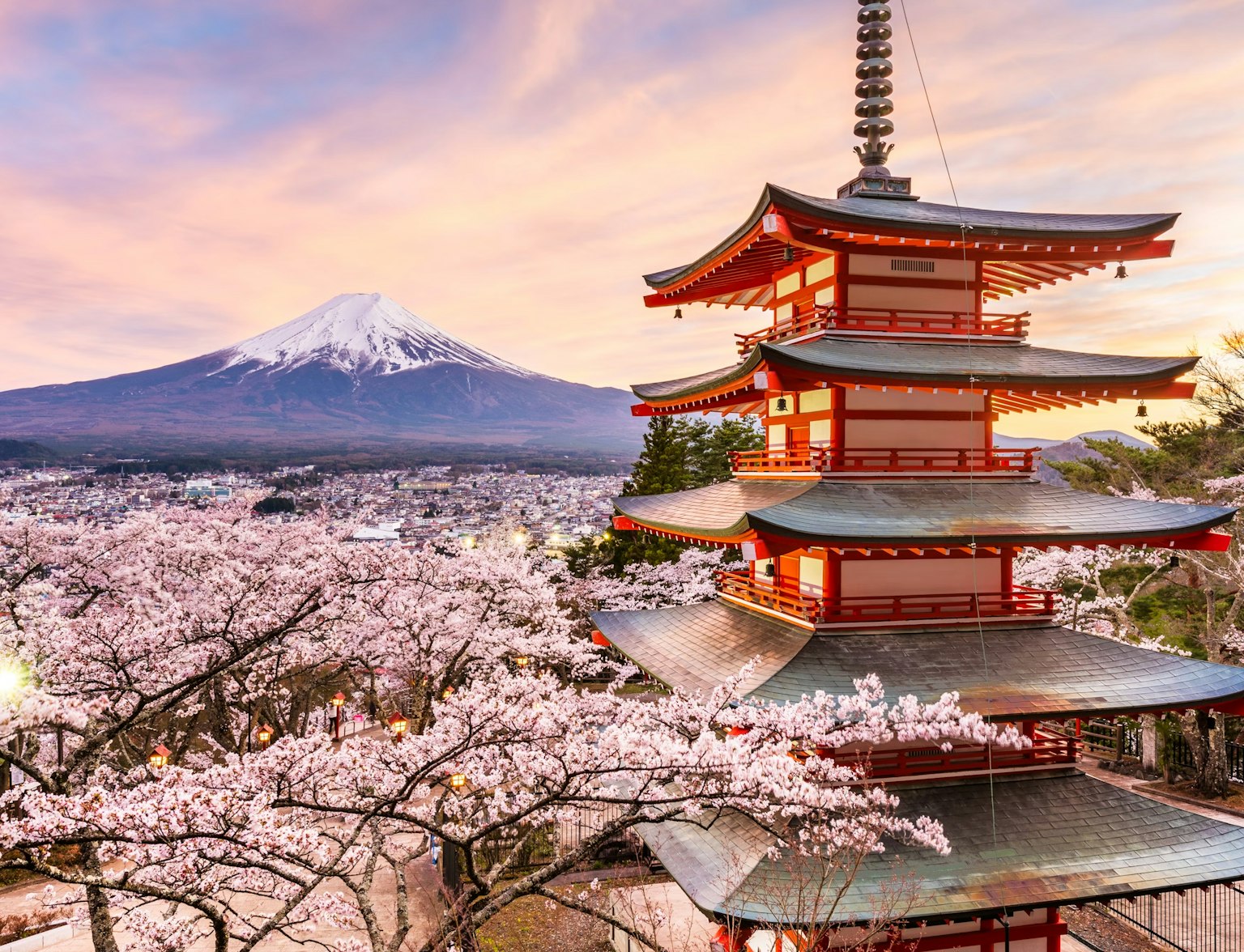
Embark on a captivating journey to the iconic Mt. Fuji and the Five-Storied Pagoda!
Arakura Sengen Shrine Opening Hours:
Open year-round
There are no specific opening and closing times as it is an open-air religious site
Chureito Pagoda Opening Hours:
Open year-round
Accessible from dawn to dusk
Fees:
Both Arakura Sengen Shrine and Chureito Pagoda are free to visit.
Optional donations can be made at the shrine.
Note: Information might be subject to change, so it's always a good idea to check for the most current details before planning your visit.
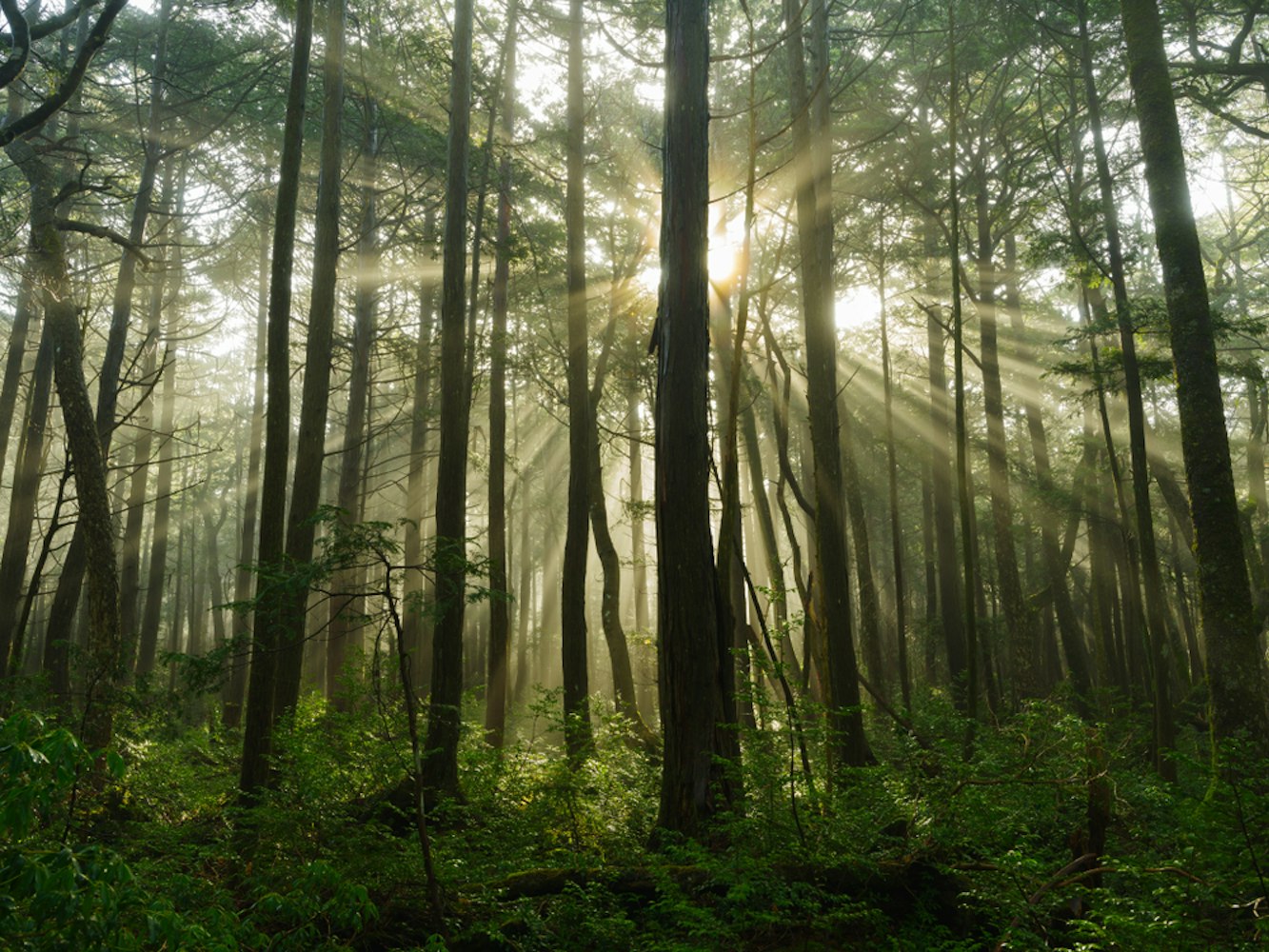
Aokigahara Forest, also known as the Suicide Forest, is a dense woodland area at the base of Mt. Fuji in Japan. It is famous for its natural beauty, featuring unique lava plateaus, caves formed from melted snow, and various native flora and fauna.
Despite its eerie reputation due to the high number of suicides reported there, the forest offers various hiking trails and is a place of scenic beauty. It is one of the lesser-visited but fascinating attractions in the Mount Fuji area.
Opening Hours:
Generally accessible 24/7
Guided tours typically run between 9:00 AM to 5:00 PM
Fees:
No entrance fee for the forest itself
Guided tours vary in price, generally starting from around ¥5,000 to ¥15,000 per person
Note: Information may change, and it's always good to double-check before planning your visit.

The Wind Cave and Ice Cave are natural wonders in the Fuji Five Lakes region near Mt. Fuji. Formed by the mountain's volcanic activity and the flow of melted snow, these caves offer a unique underground experience.
The Wind Cave is known for its intricate ice formations and cool breeze, while the Ice Cave is famous for its year-round ice pillars. Both caves provide a fascinating, if chilly, break from the usual outdoor activities around Mt. Fuji.
Visitors can explore these caves through guided tours, making them a must-visit for nature enthusiasts and adventure seekers.
Opening Hours:
Summer (April to November): 9:00 AM - 5:00 PM
Winter (December to March): 9:00 AM - 4:30 PM
Entrance Fee:
Adults: ¥350
Children: ¥200
Opening Hours:
Summer (April to November): 9:00 AM - 5:00 PM
Winter (December to March): 9:00 AM - 4:30 PM
Entrance Fee:
Adults: ¥350
Children: ¥200
(Note: Information is subject to change, so it's advisable to check the official website or contact the site directly for the most current details.)
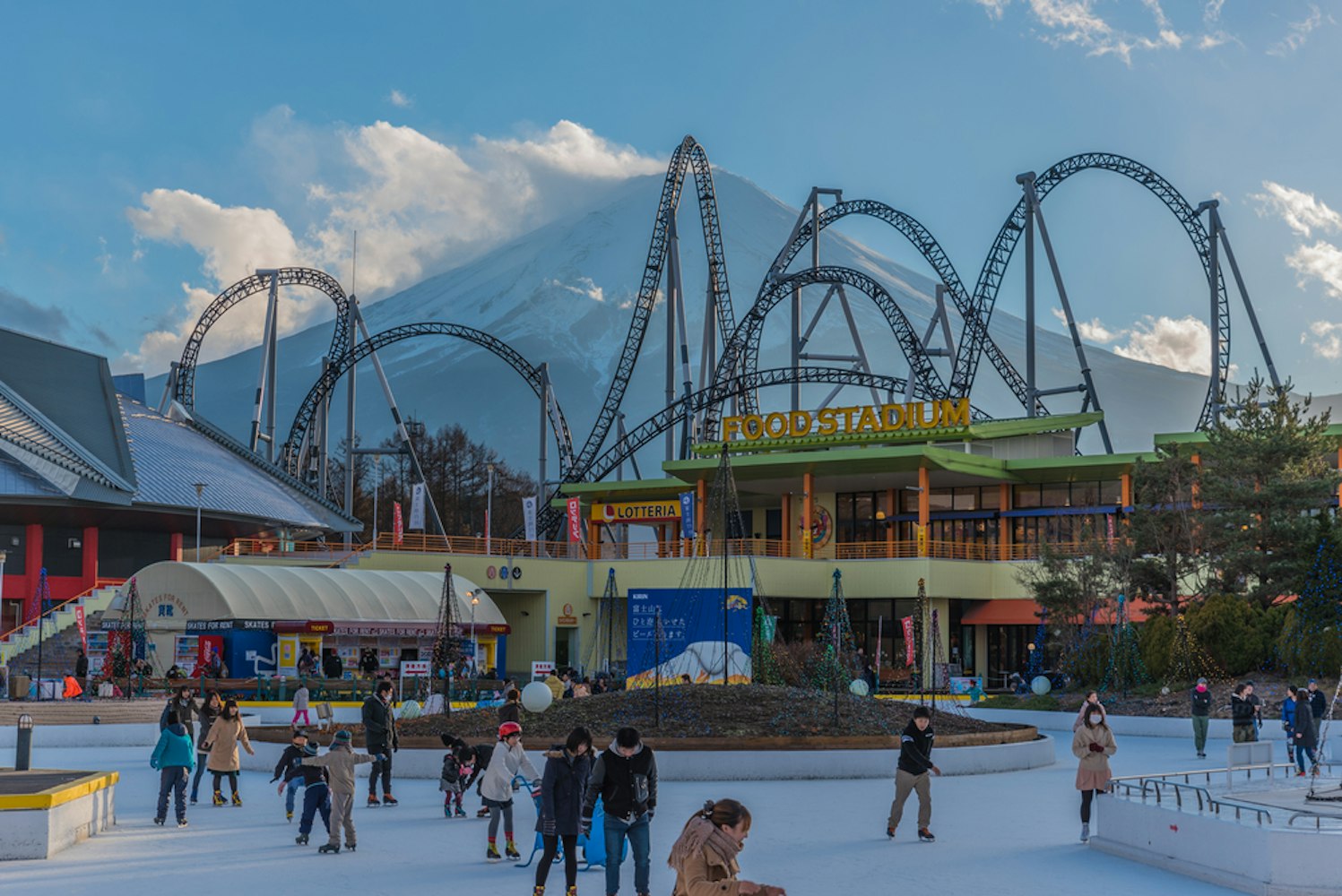
Fuji Q Highland, situated near the majestic Mount Fuji in Japan, is an amusement park enthralls visitors with its exhilarating roller coasters and captivating anime-themed attractions. It has become a beloved haven for thrill-seekers and devoted anime enthusiasts, drawing them in with its unique blend of adrenaline-pumping adventures and imaginative experiences.
In addition to the rides, it offers stunning views of Mt. Fuji, making it a unique spot for entertainment against the backdrop of one of Japan's most iconic landmarks. Whether you're seeking adventure or want a fun day out while enjoying the Mount Fuji area, Fuji Q Highland has something for everyone.
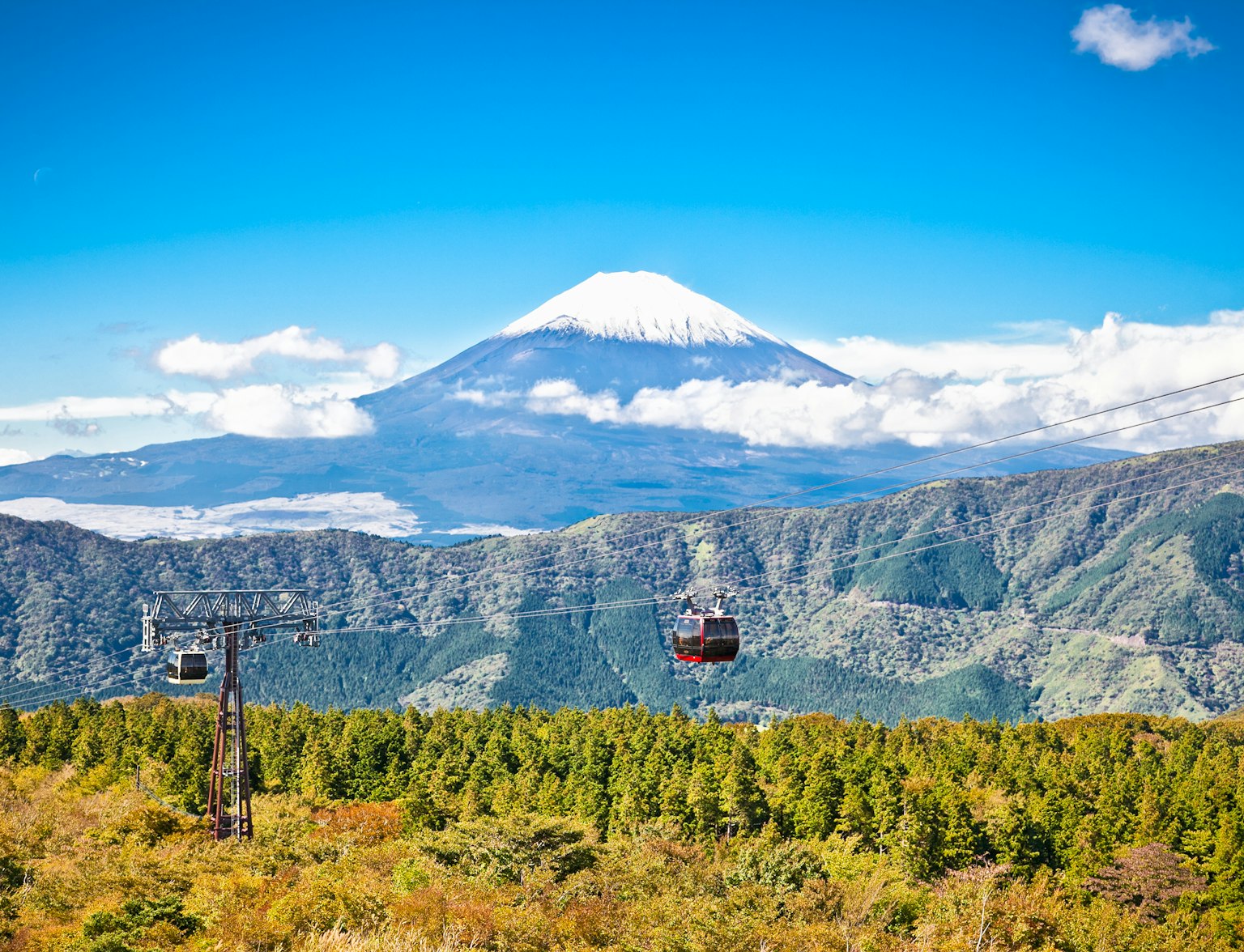
Satisfy our appetites at the Samurai-themed restaurant located in Fuji Q Highland.
Opening Hours
Weekdays: 9:00 AM to 5:00 PM
Weekends and Holidays: 9:00 AM to 6:00 PM
Extended Hours (Seasonal): Up to 9:00 PM
Admission Fees
Free Pass (includes unlimited rides):
Adults: 6,200 JPY
Children (7-11): 5,200 JPY
Seniors (65+): 5,700 JPY
One-Day Pass (park entry only):
Adults: 1,500 JPY
Children: 900 JPY
Individual Ride Tickets:
Range from 500 JPY to 2,000 JPY per ride, depending on the attraction
Parking Fees
Regular Cars: 1,000 JPY per day
Motorcycles: 600 JPY per day
Special Notes
Some attractions may require an additional fee even with a Free Pass.
Hours and fees may vary during special events or holidays.
Note: Information is accurate as of January 2022 and may be subject to change. Always check the official website for the most current information.
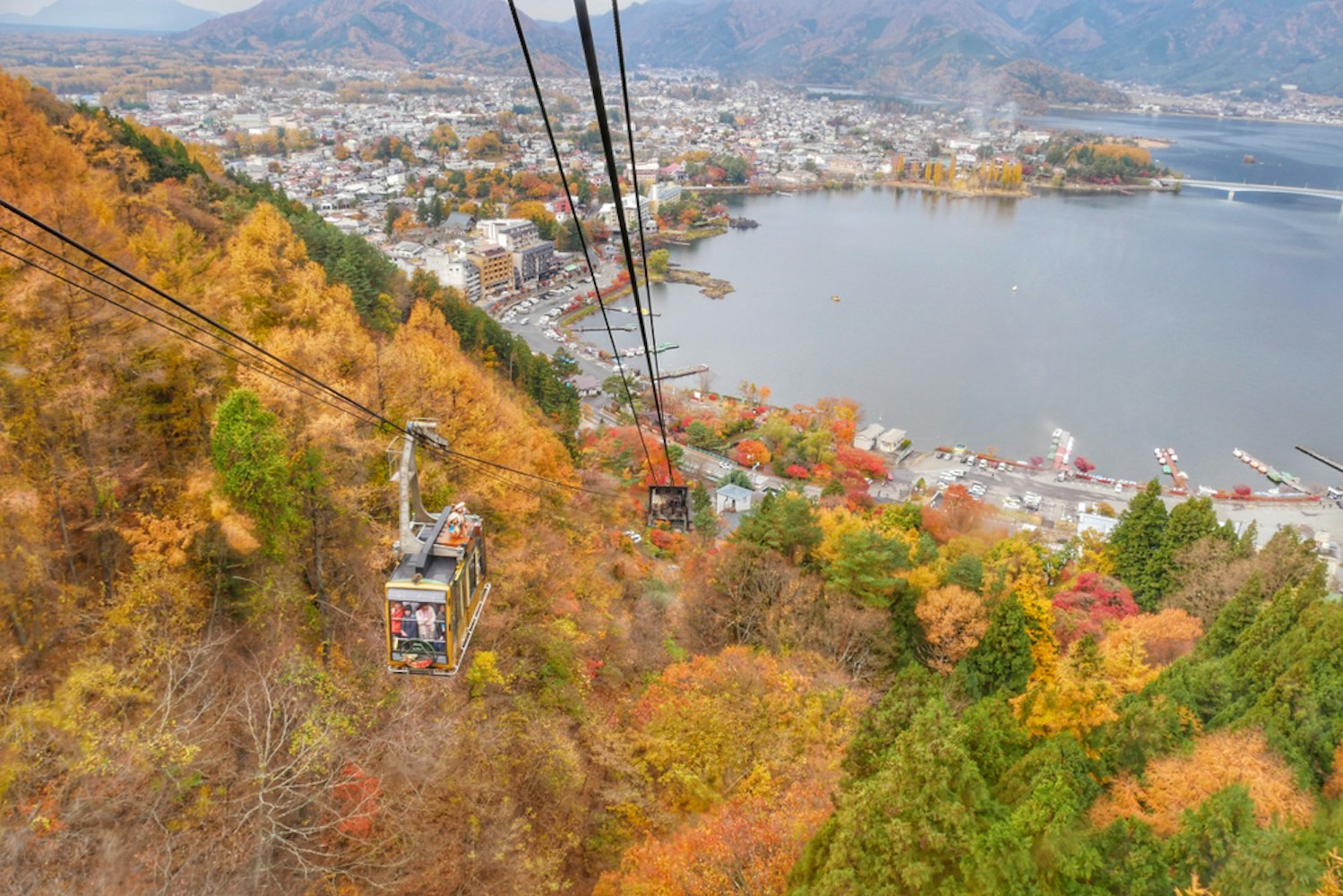
The Panorama Ropeway is a famous cable car service that offers stunning aerial views of the surrounding landscape, including Mt. Fuji and the Fuji Five Lakes region. Located near Lake Kawaguchi, the ropeway takes visitors to an observation deck to enjoy panoramic vistas, making it a must-visit attraction for photographers and nature enthusiasts.
It's an easy and convenient way to experience breathtaking sights without a strenuous hike.
Opening Hours:
Summer Season (April to November): 9:00 AM to 5:00 PM
Winter Season (December to March): 9:30 AM to 4:30 PM
Fees:
Adults: 800 yen (One-way), 1,400 yen (Round-trip)
Children (6-12 years): 400 yen (One-way), 700 yen (Round-trip)
Infants (0-5 years): Free
Note: The information provided is based on available data as of January 2022 and is subject to change. Always check the official website for the most current information.
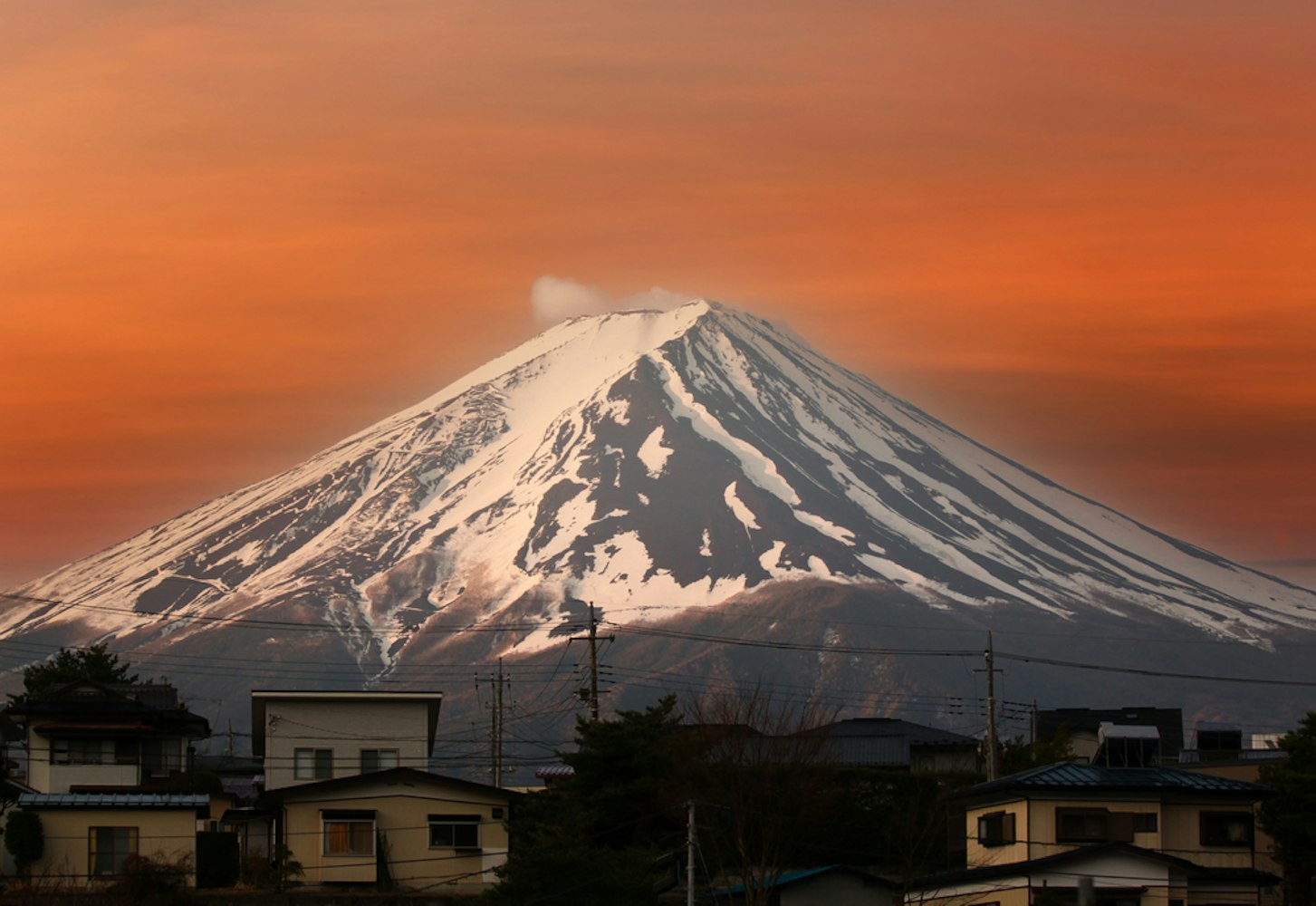
The term "Rooftop of Fujisan" often refers to the summit of Mount Fuji, Japan's highest peak and a UNESCO World Heritage Site. Conquering the summit is both a formidable and fulfilling endeavor, granting breathtaking panoramic vistas of the surrounding terrain.
This sought-after destination allures hikers and climbers alike, particularly during the official climbing season from July to September. At the summit, you'll find a weather station, a post office, and several shrines, making it more than just a peak but a destination with cultural and scientific significance.
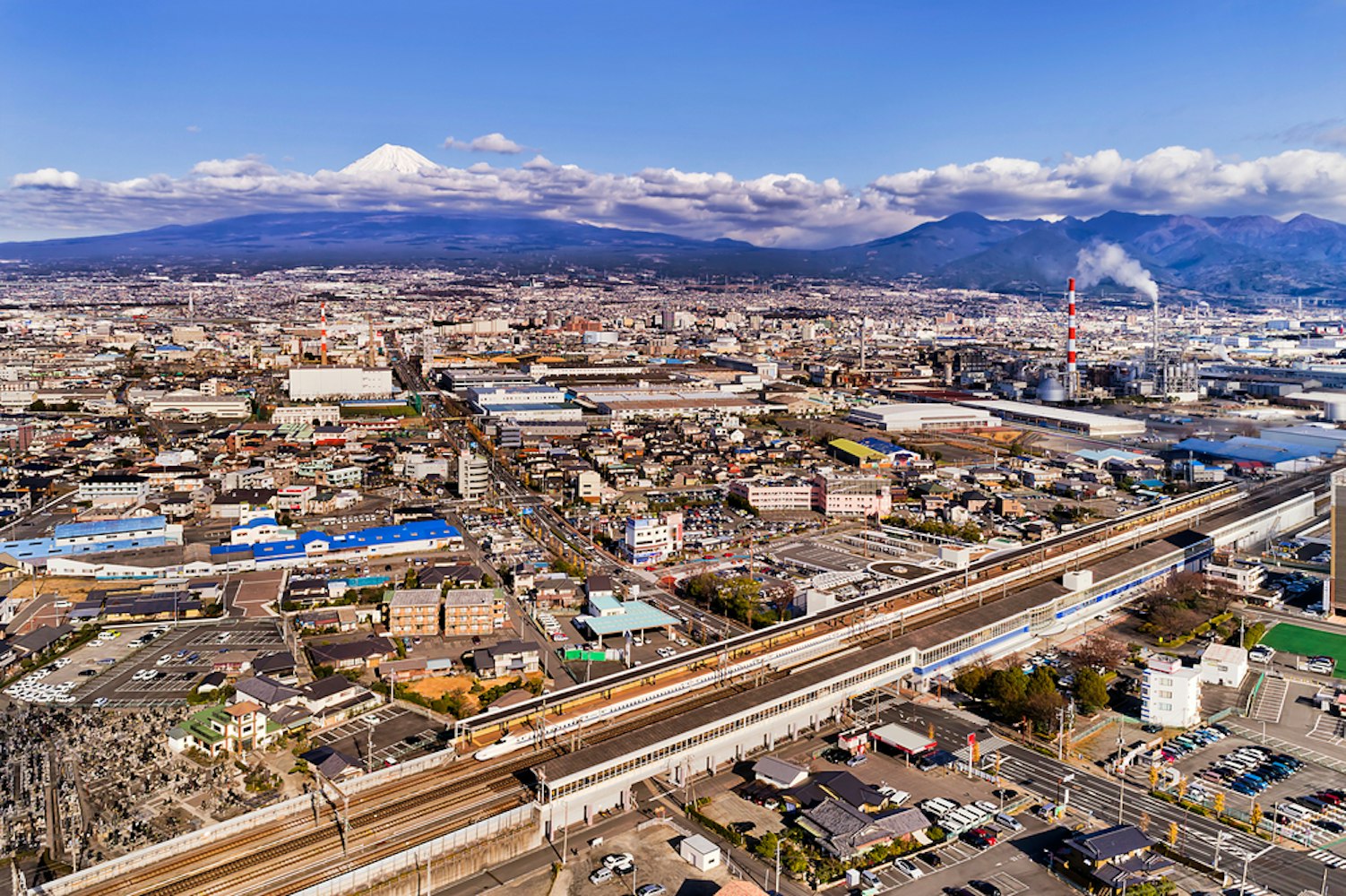
Shin-Fuji Station is a central railway station in Fuji City, Shizuoka Prefecture, Japan. It's a popular stop for those traveling to the Mount Fuji area.
One of the highlights of the station is its platform, which offers an unobstructed, stunning view of Mt. Fuji. Many travelers take advantage of this opportunity to snap photos or admire the iconic mountain before continuing their journey.
The platform has become an informal attraction for those wishing to glimpse Mt. Fuji without venturing too far from the station.
Opening Hours:
Open year-round
The first train departs at approximately 6:00 AM
The last train leaves at approximately 11:00 PM
Fees:
There is no separate fee for the platform; ticket prices vary based on the destination
Regular adult fare: Starts at around ¥1,000 and up, depending on the destination
Children (6-11 years): Approximately half the adult fare
Note: Information is subject to change, and it is always best to check the most current details before planning your visit.
It is deeply interwoven with Japanese culture, religion, and folklore. As an active stratovolcano, it is the highest peak in Japan, standing at 3,776 meters. The mountain is believed to have formed over the past 2.6 million years, with its current shape established around 10,000 years ago following a series of eruptions.
Mount Fuji has been a subject of religious and artistic reverence for centuries. In Shinto beliefs, it is considered a sacred mountain and is associated with the goddess Sengen-Sama, who embodies nature. The mountain has been a pilgrimage site for religious practices since at least the 7th century.
During the Edo period (1603–1868), various ukiyo-e artists, most notably Katsushika Hokusai, immortalized Mount Fuji in their works. Hokusai's series, "Thirty-Six Views of Mount Fuji," remains one of the most iconic portrayals of the mountain.
In the modern era, Mount Fuji continues to be a popular tourist destination for religious pilgrimages and outdoor activities like hiking and climbing. The mountain's Yamanashi and Shizuoka prefectures have established routes for climbing, with the official climbing season typically occurring from July to September.
In 2013, UNESCO designated Mount Fuji as a World Heritage Cultural Site, acknowledging its influence on Japanese culture and art. Today, the mountain attracts more than a million climbers annually and even more visitors who admire its beauty from the Fuji Five Lakes region, various parks, and other nearby areas.
In summary, Mount Fuji is a natural landmark and a cultural icon that has influenced and reflected Japanese society for centuries.
Mount Fuji and its surrounding areas offer many experiences far beyond the well-trodden tourist paths. Numerous hidden gems are waiting to be discovered, from the lesser-known lakes in the Fuji Five Lakes region to the peaceful and scenic spots like Lake Shoji and Lake Saiko.
Whether you're interested in hiking through the mysterious Aokigahara Forest, exploring natural formations like the Wind and Ice Caves, or simply seeking a tranquil spot to admire the mountain's grandeur, these off-the-beaten-path routes offer uniquely enriching experiences. So, the next time you plan a trip to Mt. Fuji, consider venturing beyond the obvious to explore the hidden treasures this iconic area offers.
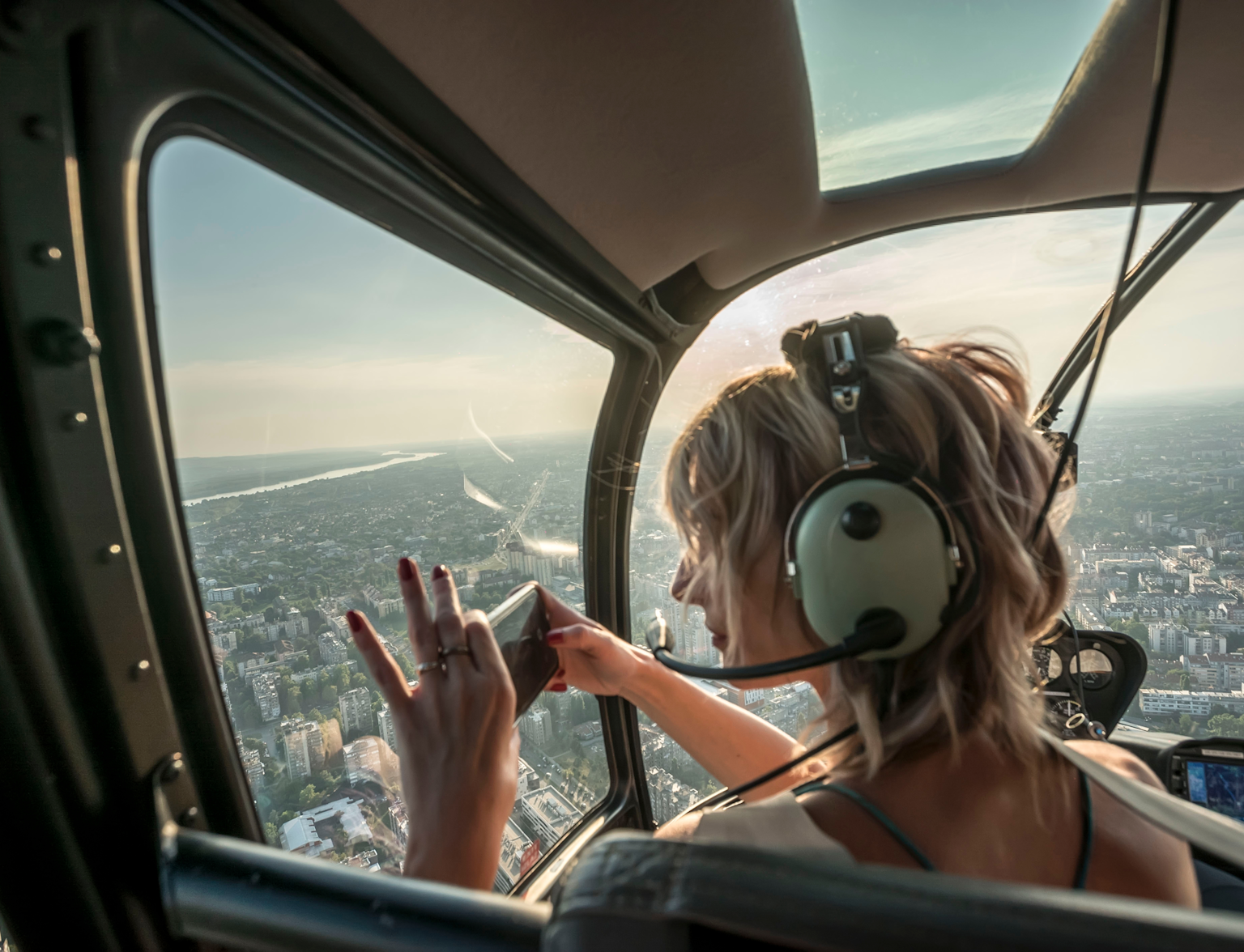
Witness panoramic views, glide over iconic landscapes, and capture the awe-inspiring beauty of Mt. Fuji from a vantage point like no other.



